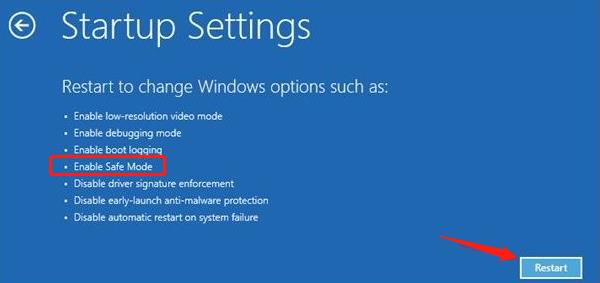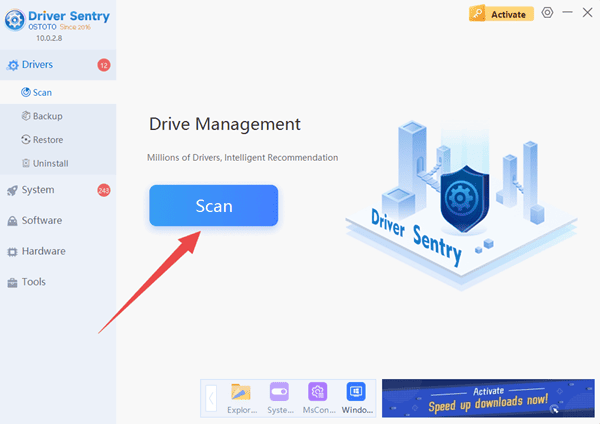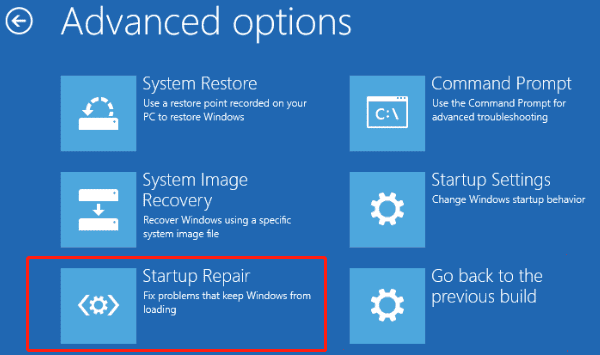
Computer not booting after updating Windows is a frustrating and confusing problem. In most cases we can fix this problem. Here are some common solutions to help you get your computer back in working order.
1. Enter Safe Mode
Safe Mode is a diagnostic mode in which Windows loads only basic drivers and services. If your computer won't boot up after an update, try entering Safe Mode:
Press and hold the Power button for about 10 seconds to force a shutdown, then start the computer again.
During the startup process, when the Windows logo appears, hold down the 'Shift' key and press the 'F8' key several times until the advanced startup options appear. Select 'Enable Safe Mode' and press the Enter key.

2. Update the Driver
Sometimes, driver problems can cause your computer to fail to boot. Driver Sentry is recommended for automatic driver detection and updates, saving time and avoiding errors during installation.
Download the latest version of Driver Sentry, install the software, and open it. Click "Scan".

After the scan, identify the display driver in the results list and click "Upgrade".
Restart your computer after updating the drivers to ensure the changes take effect.
3. Use System Restore
System Restore can restore your computer to a previous state, usually before an update. Here are the steps to use System Restore:
Repeat the steps to enter Safe Mode, but select "Repair your computer".
In the Troubleshooting menu, select Advanced Options and then System Restore.
Select a restore point before the update and follow the prompts to complete the restore process.
4. Uninstall Recent Updates
Sometimes, the latest Windows update may cause compatibility issues and prevent your system from booting. You can try uninstalling recent updates:
Enter Safe Mode as described earlier.
Type "Control Panel" in the search box and click Open.
Select "Programs and Features" and click "View Installed Updates".
Find the most recent update, right-click on it and select "Uninstall".

5. Fix Startup Issues
Both Windows 10 and Windows 11 provide automatic fixes to detect and fix startup problems. Here are the steps to do so:
Go to the Advanced Boot Options menu as described before.
In the Troubleshooting menu, select Advanced Options and then select Startup Repair.
The system will automatically detect and attempt to fix the startup problem. When finished, restart your computer to see if the problem is solved.

6. Using the Command Prompt
Sometimes, using the command prompt can solve startup problems. You can try the following commands:
As mentioned earlier, go to the Advanced Boot Options menu and select Command Prompt.
At the command prompt, type the following command and press Enter:
``
bootrec /fixmbr
bootrec /fixboot
bootrec /scanos
bootrec /rebuildbcd
```
These commands will repair the Master Boot Record (MBR) and Boot Configuration Data (BCD) and attempt to fix boot problems.
7. Check for Hardware Problems
If none of the above methods solves the problem, the failure to boot may be caused by a hardware failure. You can try the following methods:
Ensure that all hardware is connected properly, especially the hard disk and memory sticks. Disconnect and reconnect all hardware to make sure there is no looseness.
Many brands of computers come with hardware diagnostic tools, so you can press a specific key to enter the diagnostic mode when you turn on the computer to check if the hardware is working properly.
The above is the solution to solve the problem of computer not booting up after Windows update, hope it is helpful to you.